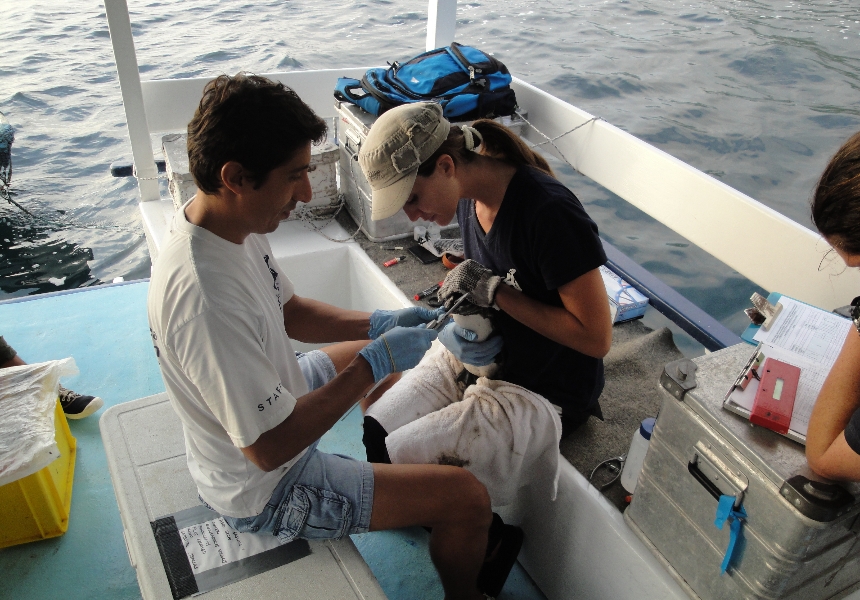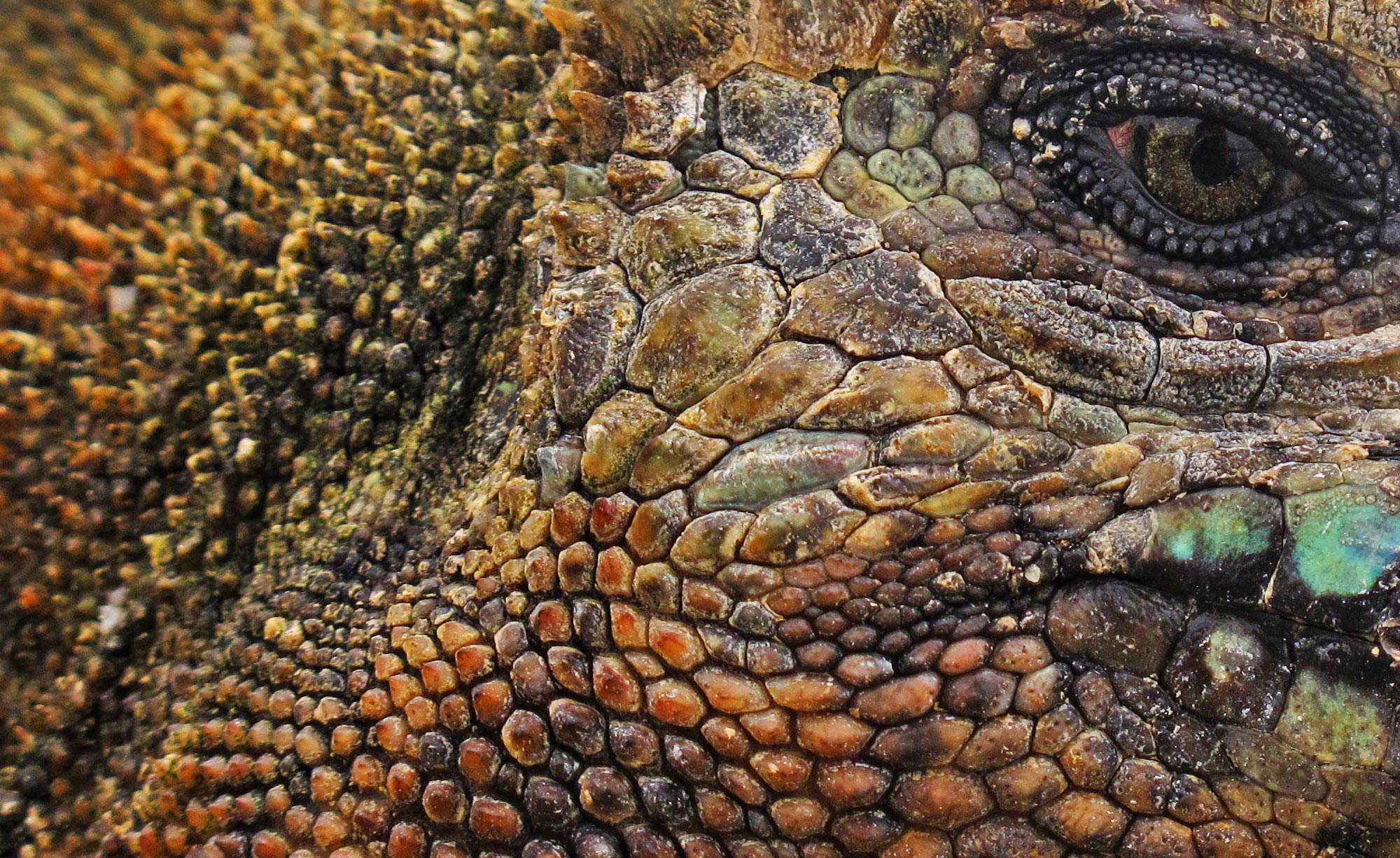A fundamental component of any conservation management strategy is monitoring the existing population of a species. Since 2011, the Galapagos Conservation Trust has been funding a monitoring and research project which has provided good insight into the current status of the Galapagos penguin. By monitoring the health of their populations, we can assess the health of the whole marine environment (as they are an indicator species).
How are Penguins Monitored?
Four times a year, a team is sent out to three of the major penguin colonies (In Bolivar Channel, the Mariela islets and Elizabeth Bay).
-Step 1: Catch a penguin.
-Step 2: Measure their height and beak length (this helps determine their sex).
-Step 3: A DNA sample is taken from discarded feathers or faeces which can be used to determine gender. Blood samples are taken from some of the penguins to test for diseases such as avian malaria.
-Step 4: Fit the penguin with a PIT tag.
-Step 5: Other species found in the area identified and logged.
-Step 6: The sampling site is fitted with a meteorological base and oceanographic logger to evaluate threats from climate change.

Penguin monitoring in action ©Charles Darwin Foundation
The data that is collected is compared with historical data in order to provide information on the differences between penguin populations. The data can also be used to compare colonies of penguins and their feeding habits or environmental pollution.
Data collected includes key population demographics which are used to estimate rates of penguin survival and reproduction, and meteorological conditions to assess how the changing environment is affecting populations. Veterinary samples were also taken to assess penguin health and to test for the presence of diseases such as avian malaria. Additionally, researchers recorded the presence of introduced mammal species such as rats and cats, providing a valuable indication as to whether invasive species management strategies are working or if more needs to be done.
With this data, the team are able to provide scientific advice to the Galapagos National Park Service that will help them to manage these populations. It is important that this research is undertaken as a long term study in order to provide a useful indication of population trends over time, so securing the remaining funding is critical at this crux point for the endangered species.
Previous: Penguin Protectors – What issues do Galapagos Penguins face?



